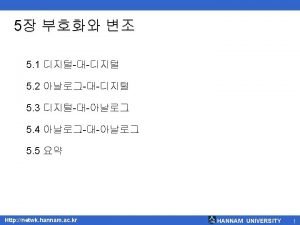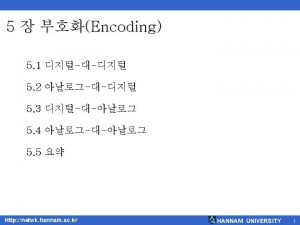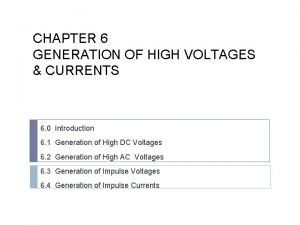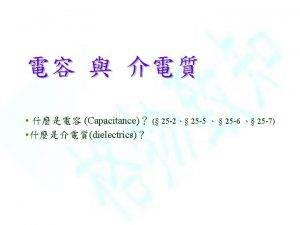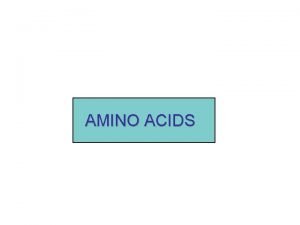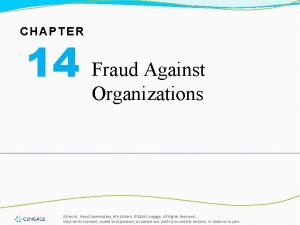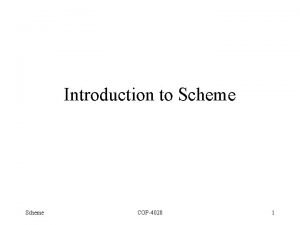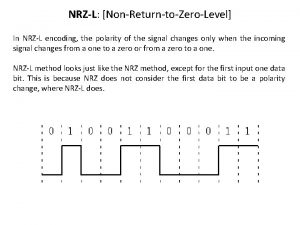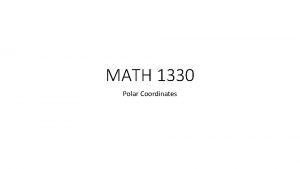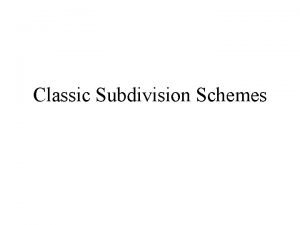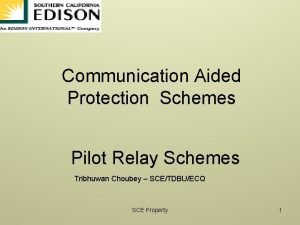Polar NRZL NRZI RZ schemes The voltages are















- Slides: 15

Polar NRZ-L, NRZ-I, RZ schemes The voltages are on the both sides of the time axis NRZ-L (Non Return to Zero-Level): The level of the voltage determines the value of the bit NRZ-I (Non Return to Zero-Invert): If the bit is 0 there is no change; if the bit is 1 there is a change RZ (Return to Zero): The signal changes during the bit 1 A. B. M. Nasiruzzaman

Figure 4. 6 Polar NRZ-L and NRZ-I schemes 2 A. B. M. Nasiruzzaman

Figure 4. 7 Polar RZ scheme 3 A. B. M. Nasiruzzaman

Note In NRZ-L the level of the voltage determines the value of the bit. In NRZ-I the inversion or the lack of inversion determines the value of the bit. 4 A. B. M. Nasiruzzaman

Note NRZ-L and NRZ-I both have an average signal rate of N/2 Bd. 5 A. B. M. Nasiruzzaman

Note NRZ-L and NRZ-I both have a DC component problem. 6 A. B. M. Nasiruzzaman

Example 4. 4 A system is using NRZ-I to transfer 10 -Mbps data. What are the average signal rate and minimum bandwidth? Solution The average signal rate is S = N/2 = 500 kbaud. The minimum bandwidth for this average baud rate is Bmin = S = 500 k. Hz. 7 A. B. M. Nasiruzzaman

Polar Biphase schemes: Manchester and Differential Manchester: RZ + NRZ-L Differential Manchester: RZ + NRZ-I 8 A. B. M. Nasiruzzaman

Figure 4. 8 Polar biphase: Manchester and differential Manchester schemes 9 A. B. M. Nasiruzzaman

Note In Manchester and differential Manchester encoding, the transition at the middle of the bit is used for synchronization. 10 A. B. M. Nasiruzzaman

Note The minimum bandwidth of Manchester and differential Manchester is 2 times that of NRZ. 11 A. B. M. Nasiruzzaman

Note In bipolar encoding, we use three levels: positive, zero, and negative. 12 A. B. M. Nasiruzzaman

Bipolar schemes: AMI and pseudoternary In Bipolar encoding ( multilevel binary) there are three voltage levels: +ve, -ve, and 0 AMI (Alternate Mark Inversion): AMI means alternate 1 inversion. Zero voltage represents 0. Pseudoternary: The 1 bit is encoded as a zero voltage and the 0 bit is encoded as alternating positive and negative voltages 13 A. B. M. Nasiruzzaman

Figure 4. 9 Bipolar schemes: AMI and pseudoternary 14 A. B. M. Nasiruzzaman

Multilevel Schemes: Note In m. Bn. L schemes, a pattern of m data elements is encoded as a pattern of n signal elements in which 2 m ≤ Ln. 15 A. B. M. Nasiruzzaman
 Antigentest åre
Antigentest åre Nrzl
Nrzl Nrzl
Nrzl Universal serial bus
Universal serial bus Usb port analyzer
Usb port analyzer Generation of high voltage
Generation of high voltage Common electrical hand tools
Common electrical hand tools Attractions
Attractions Hydrogen or covalent bond stronger
Hydrogen or covalent bond stronger What are polar and nonpolar dielectrics
What are polar and nonpolar dielectrics Uniones metalicas ejemplos
Uniones metalicas ejemplos Enlace covalente coordinado
Enlace covalente coordinado Polar and non-polar amino acids
Polar and non-polar amino acids Register disbursement schemes
Register disbursement schemes Schools recommendation schemes
Schools recommendation schemes Stata schemes
Stata schemes

